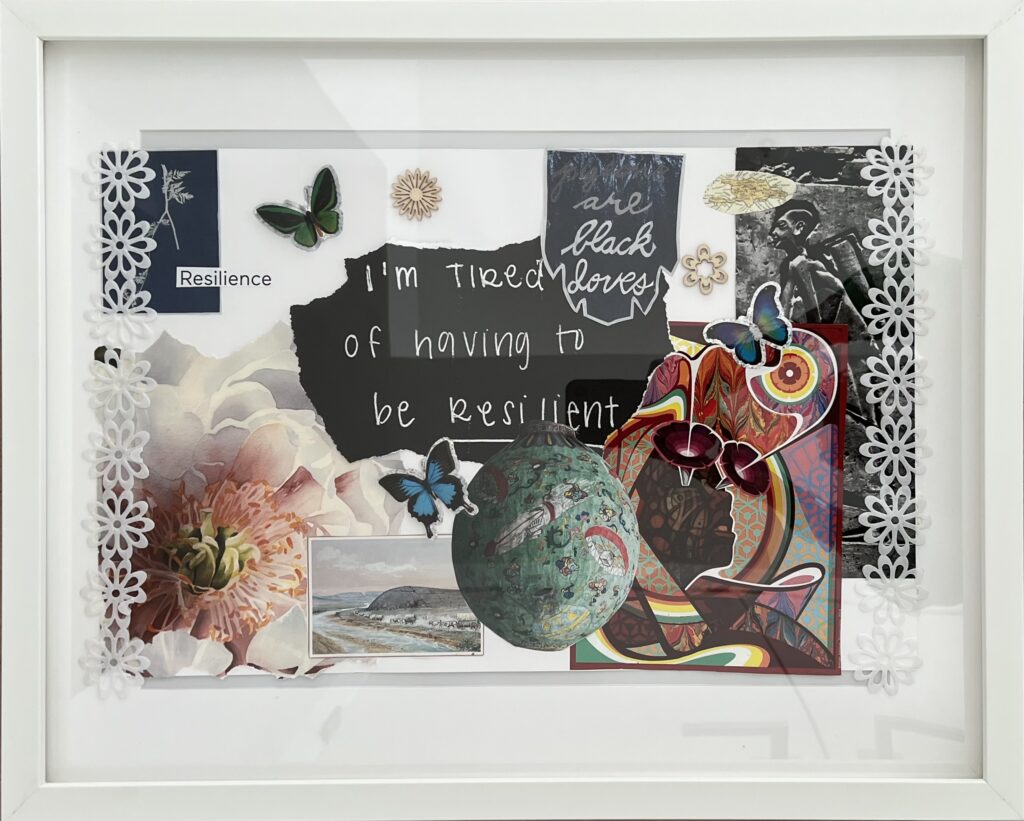
A special art project by Desirée de Jesús, an assistant professor in York U’s Department of Communications & Media Studies whose research explores Black girlhood and belonging in Canada, will be exhibited at the Toronto International Film Festival (TIFF) Lightbox building in February.
When she asked Black teenagers in Canada what it feels like to be a Black girl, what bubbled up was a mixture of pride and frustration, says de Jesús.
The girlhood media scholar says there was a joyousness in cultural expressions like food, music and personal style, along with a pride in being part of a diaspora that has demonstrated resilience. But there was also an underlying sense of otherness.
“There's a sense in which they feel as if they're positioned as outsiders,” de Jesús says. “They're often asked ‘Where are you from?’ Even though their families have been here for generations, there's still something about being Black in Canada or any racialized group where the assumption is that you are an immigrant or you've recently come to Canada.”
De Jesús is part of Mapping Black Girl Geographies and Belonging in Canada, a research project funded by a SSHRC Insight Development Grant that aims to amplify Black girls’ voices and correct misperceptions that Black people are new to Canada. (In fact, the research traces Black life in Canada back to the early 1600s.) The project also seeks to foster awareness that Black girls, like all girls, can contribute to our country’s future success.
“We are trying to provide some context about Black presence to show that there's a much longer history that folks may not be aware of and that it isn't just recent,” says de Jesús. “Black folks have been a part of nation building and they want people to know that they’re also stakeholders in Canada’s future.”
Recently, de Jesús has teamed up with Crystal Webster, an historian of Black children and girls in North America, and Kisha McPherson, an educator who studies the impacts of media on Black youth, to challenge through art representations of Canada as foundationally white.

Together, the academics pursued a project where Black girls in Toronto and Vancouver were asked to express themselves making art collages featuring images they found in magazines. They were prompted by questions like ‘What does it mean to be a Black girl in Canada? How does it feel? Where do you feel most like yourself?’
Sarai, a Toronto girl, depicted flowers and butterflies. And also the word “resilient,” next to the phrase, “I’m tired of having to be resilient.”
In Vancouver, Danya, highlighted the words “family” and “success,” along with the phrases, “confessions of a lonely immigrant kid,” and “stop racism.”
The team aspires to produce collages representing the experiences of girls all across Canada, eventually posting their artwork, personal narratives and regional Black histories online as a “counter archive of Black Canadian girlhood.”

Already the project and its messages are gaining some high-profile exposure.
The collages will be featured as part of Vibrant Visions: The Art of Black Girlhood in Canada exhibit at the Toronto International Film Festival Lightbox building. The free exhibit in the Atrium runs Feb. 9-22, coinciding with Black History Month in Canada.
On Feb. 19, a collaboration pairing the exhibit and TIFF Next Wave will present a conversation about Black girlhood between Nala Haileselassie, the project’s curatorial assistant, and filmmaker Alicia K. Harris, whose short film On a Sunday at Eleven will be screened alongside the feature film Rocks.
There will also be a life-size swing sculpture, which de Jesús describes as an invitation for Black women to “dream and think about their own girlhoods.”
